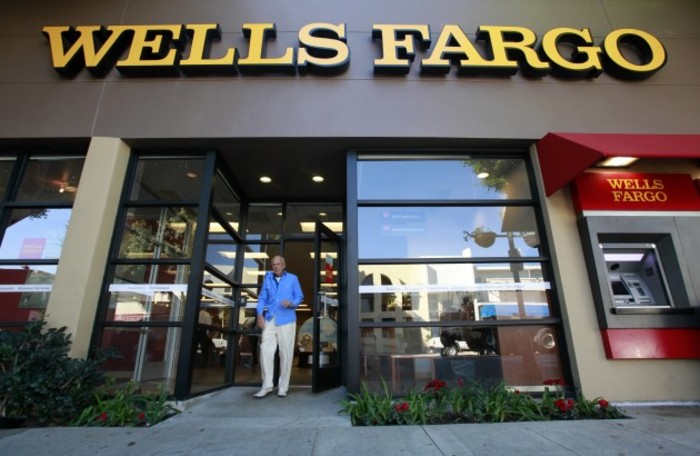Your crash course in... How a cut-throat sales culture turned a 'good' bank bad
Wells Fargo employees blamed unfair targets for the systematic use of sham accounts.
IN THE AFTERMATH of the global financial crash, Wells Fargo was the bank that kept on winning. Today, it’s public enemy number one.
The third-largest bank in America has found itself at the centre of a massive scandal after it was fined for opening two million sham accounts for customers who didn’t need or want them – or even know they even existed.
The US Consumer Financial Protection Bureau (CFPB) ordered the bank to pay a $185 million fine and $5 million in compensation to customers after it opened the unwanted, fee-generating accounts over a five-year period.
That’s a small fine in the world of banking, but the penalty is the largest the CFPB has issued since it was set up in 2011.
Wells Fargo said it sacked 5,300 employees for misconduct since 2011, most of whom held low-level positions.
Unsurprisingly, the public did not like that move, especially as the company’s chief executive, John Stumpf, said he was sorry for what happened but initially wouldn’t step down.
 Wells Fargo's John Stumpf
Wells Fargo's John Stumpf
He was grilled at a hearing by the US Senate’s banking committee, where one senator accused him of “gutless leadership” for pushing the blame onto low-level, low-wage employees.
Stumpf has maintained that he and other top executives knew nothing about the dodgy practices, but recent accounts from ex-Wells Fargo workers contradict his claims.
He finally bowed to pressure yesterday and announced he was stepping down, effective immediately.
With that news in mind, let’s look at how the company went from being the ‘good guy’ of banking to another bad apple.
‘Folksy bank’
In 2009 – when public trust in financial institutions was at an all-time low – Wells Fargo posted record profits of $3.2 billion. How did it do it?
In the build-up to the crash, Wells lost a fair chunk of its market share in the mortgage business, which turned out to be a blessing in disguise since it avoided the subprime mortgage crisis that shook America and sent shockwaves across the world.
It benefited from the fact that it refused to sell dodgy no-doc loans, where a borrower doesn’t have to provide hard proof of their income to the lender.
All of this helped Wells Fargo position itself as ‘the folksy bank’ in the gloomy, post-crash banking sector.
The all-American stagecoach served as Wells Fargo’s corporate symbol, drawing on the bank’s 200-year history.
By tapping into its customers’ collective nostalgia, it created the impression that it was a wholesome place where ordinary people’s money was safe.
The branding exercise worked and the bank emerged from the wreckage of the financial downturn as “one of the best banking franchises” in the US.
 Wells Fargo stagecoach
Wells Fargo stagecoach
High quotas
However when it comes to working out how things turned sour, the core problems can also be traced to Wells Fargo’s business model.
A big part of the bank’s commercial strategy is ‘cross-selling’, which is another word for up-selling, where salespeople encourage customers to buy additional products.
Bigwigs at the company wanted to attract more customers to join its bank after the crash and then encourage them to open as many accounts as possible. The more customers and accounts there were, the healthier the company looked for investors.
In order to achieve this, the bank set out sales targets for its bankers. That’s when things took a turn for the worse.
According to testimony from former employees, district managers set targets that were simply too high, which created an unhealthy sales environment.
Employees were expected to convince customers to sign up to eight different accounts in what was called the “gr-eight initiative”. Sometimes the quota swelled to 20 accounts.
 A Wells Fargo bank
A Wells Fargo bank
Workers started to find ways to cheat so they could meet their targets.
First, they slipped additional forms into new customers’ paperwork – they would sign up customers for accounts, credit cards, loans and other products without the client even noticing. If a customer complained, bankers simply blamed it on a computer glitch.
Then salespeople found a more convenient way to fudge the numbers – they would move money from customers’ existing accounts into new ones without their knowledge.
The dangerous thing for the customers was that the unwanted accounts would rack up banking charges and overdraft fees – and if they were signed up for an unsolicited personal credit line, it could damage their credit rating.
Whistleblowers
It’s not like everyone at Wells Fargo approved of the dodgy sales tactics. Dozens of complaints about the practice filed to the company’s ethics hotline went ignored.
A number of former employees have come forward in recent weeks to say that they were punished if they tried to report the unethical behaviour.
Speaking to CNN, former banker Bill Bado said he was fired eight days after complaining to the hotline.
Another former employee, Nathan Todd Davis, told a California state assembly that he filed 50 complaints to the ethics hotline
“I’ve been harassed, intimidated, written up and denied bathroom breaks,” he said, adding that he was fired after 10 years for the company after being “90 seconds late to work”.
Systemic failure
Former employees who spoke to the NPR podcast, Planet Money, described the working environment as a “boiler room”.
One personal banker, who called herself ‘Ashley’, said the sales tactics were “a systemic thing that was taught”. She worked in the same building as Stumpf and other executives, who would pass by her desk in the morning.
Her statements contradict those from Stumpf, who said the people at the top had no idea what was going on.
Ashley said she found it hard to find work after she was fired for failing to meet her sales quota.
She later learned that it was because the company had put a black dot on her permanent record for failing to perform her job. The bank has so far refused to respond to any claims made by former employees.
Criminal probe
Even after two congressional hearings, Stumpf said he would not resign – until the sudden about-face yesterday.
He has repeatedly said that senior management, himself included, only learned about the problem in 2013, when the LA Times published a report on the bank’s aggressive sales tactics. That story came two years after the bank first started firing people over the matter.
 A senator grills Stumpf
A senator grills Stumpf
As a gesture, he forfeited $41 million in unvested stock options – shares he didn’t yet own.
The company has also confirmed Stumpf won’t receive a severance package following his hasty retirement, although he will still keep the tens of millions he earned in just under a decade as CEO and 35-odd years at the bank.
There have also been calls for a criminal probe into the Wells Fargo scandal. The CFPB doesn’t have the power to launch criminal investigations, but it can refer cases to the US Department of Justice.
A group of 14 senators – including Bernie Sanders – wrote to the justice department, urging it to open a criminal investigation.
Early reports from The Wall Street Journal suggested that a criminal probe is under way, but it is still too soon to tell whether anyone will be prosecuted.






